Cai Rang Floating Market
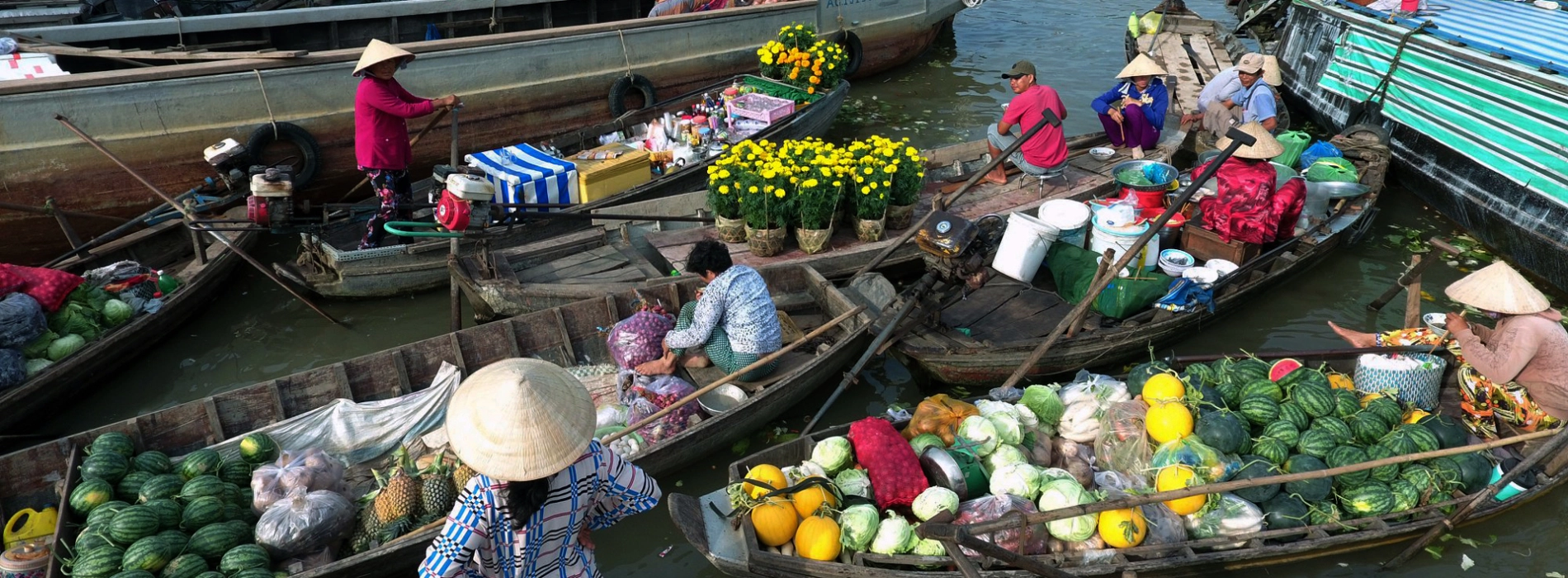
Cai Rang Floating Market, nestled along the Cai Rang River, emerges as a bustling spectacle within the heart of the Mekong Delta, Vietnam. Just a short distance from Can Tho City, this market is a vital center for local trade and commerce. At the break of dawn, the market comes to life as an array of boats, from modest rowing vessels to larger, motorized crafts, converge to engage in the exchange of goods. The unique charm of Cai Rang lies in the boats' distinct feature of displaying sample products on tall poles, facilitating easy identification for buyers. Beyond its practical role, the market has evolved into a tourist attraction, drawing visitors eager to witness the vibrant transactions and immerse themselves in the local way of life. Here, the cultural tapestry of the Mekong Delta unfolds, showcasing the profound connection between the community and the waterways that sustain their livelihoods. Adjacent to the market, floating restaurants and the picturesque riverbanks add to the overall experience, making Cai Rang Floating Market an emblem of the region's rich heritage and enduring reliance on river-based commerce.
Cai Rang Floating Market's history is deeply intertwined with the cultural and economic development of the Mekong Delta, reflecting the resilience and adaptability of the local communities in this region. While specific historical records about the market's origin may be limited, the broader historical context of the Mekong Delta provides insights into the factors that shaped the market.
The Mekong Delta has a long history of river-based trade and transportation, dating back centuries. The intricate network of rivers and canals in the delta has naturally facilitated the establishment of floating markets as vital hubs for buying and selling goods. These markets have played a crucial role in connecting different communities along the waterways.
Cai Rang Floating Market, like other floating markets in the Mekong Delta, evolved as a response to the geographical challenges of the region. The delta's vast network of water channels made it more practical for locals to engage in trade using boats rather than conventional land-based markets.
Over the years, as the Mekong Delta became a key agricultural region in Vietnam, the floating markets gained significance as trading centers for locally produced fruits, vegetables, and other goods. The market became a symbol of the Mekong Delta's agricultural abundance and the resourcefulness of its people in utilizing the waterways for commerce.
In recent decades, with the growth of tourism in Vietnam, Cai Rang Floating Market has not only continued to serve its primary function as a trading hub for locals but has also become a popular destination for visitors seeking an authentic cultural experience. The market's history is, therefore, not only a tale of economic exchange but also a testament to the enduring traditions and adaptability of the Mekong Delta's communities in the face of changing times.
The trading activities on Can Tho River were once confronted with numerous challenges due to the extensive market space, where the cacophony of machinery and people commingled, often drowning out advertising attempts. Consequently, the "4 hang" method emerged as a solution to facilitate easy recognition for both sellers and buyers in the midst of this bustling environment.
Buying and selling "4 hung" - "beo" tree
Specifically, the term "4 hang" encompasses the following practices:
Exchange of goods through hand-to-hand: Trade at the Cai Rang floating market predominantly involves a hand-to-hand exchange due to the constant movement of boats on the river. This method facilitates seamless transactions among the people navigating the bustling waterways.
Explore the fruit market on the river
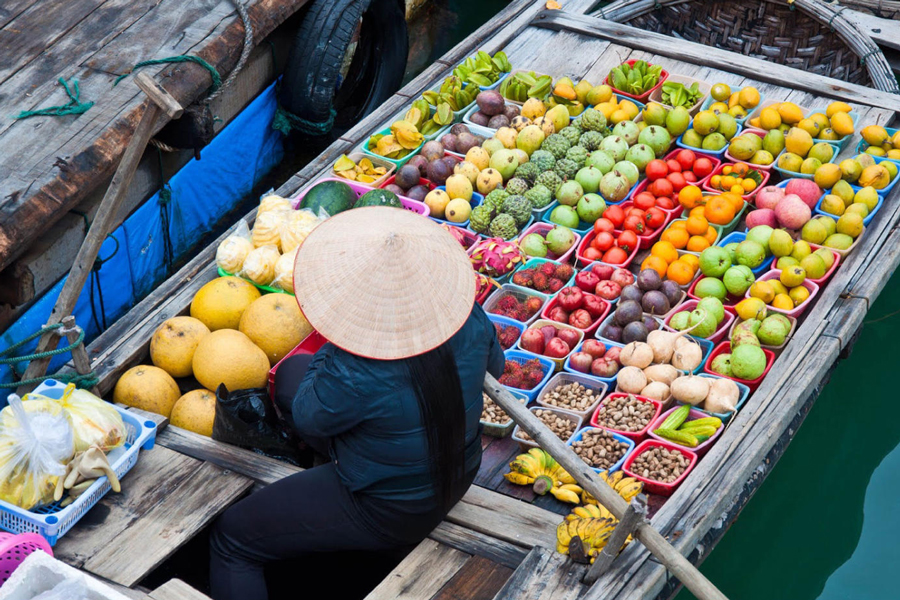
The variety of fruits in Cai Rang Floating Market
The market's proximity to fruit-laden boats provides a unique opportunity to savor an array of fresh fruits. Delight in the flavors of pineapple, mango, strawberry, watermelon, orange, coconut, and various other sweet fruits that are readily available at the Cai Rang floating market. This offers visitors a firsthand experience of the region's agricultural abundance and the chance to indulge in the vibrant and diverse fruit offerings characteristic of the market.
Enjoy the local food on the boat
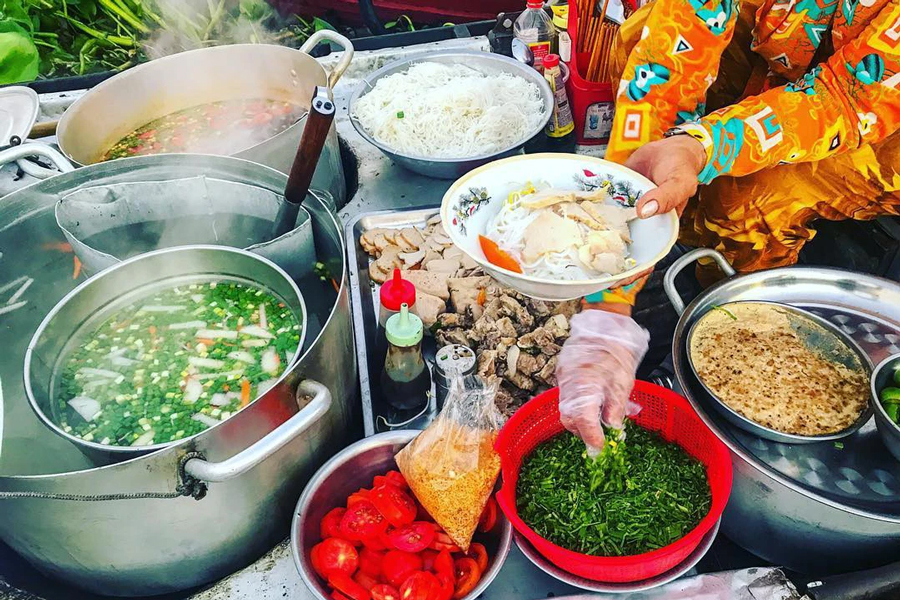
Explore the diverse offerings of Mekong Delta cuisine
Due to the nature of a floating market and all activities take place on boats and on the river, all items are maximally simplified. When you eat here, you don't have chairs or tables, but sometimes there is simply a long wooden bar across the two edges of the boat or boat and you have the ideal table to enjoy the food. Sitting precariously on a boat, in the middle of a vast river, eating a bowl of noodles, hot crab vermicelli or steamed rice noodle soup will be experiences that you will never forget.
Listen to southern amateur music on the river
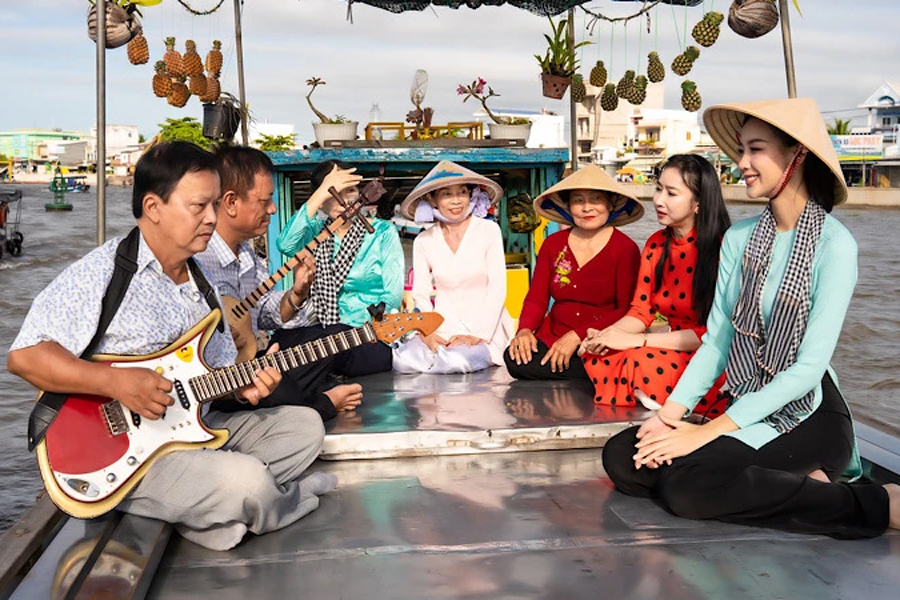
Southern amateur music - A deeper connection to the local traditions
Cai Rang Floating Market in Can Tho becomes even more special on weekends with the arrival of an amateur folk music boat. Traveling along the Hau River, it treats both locals and tourists to traditional Southwestern melodies. Sitting on a boat amidst the floating market, you can experience the unique blend of peace and excitement that defines this culturally rich land.
Reference boat rental price at Ninh Kieu Wharf, price may change depending on time, especially on holidays and Tet.
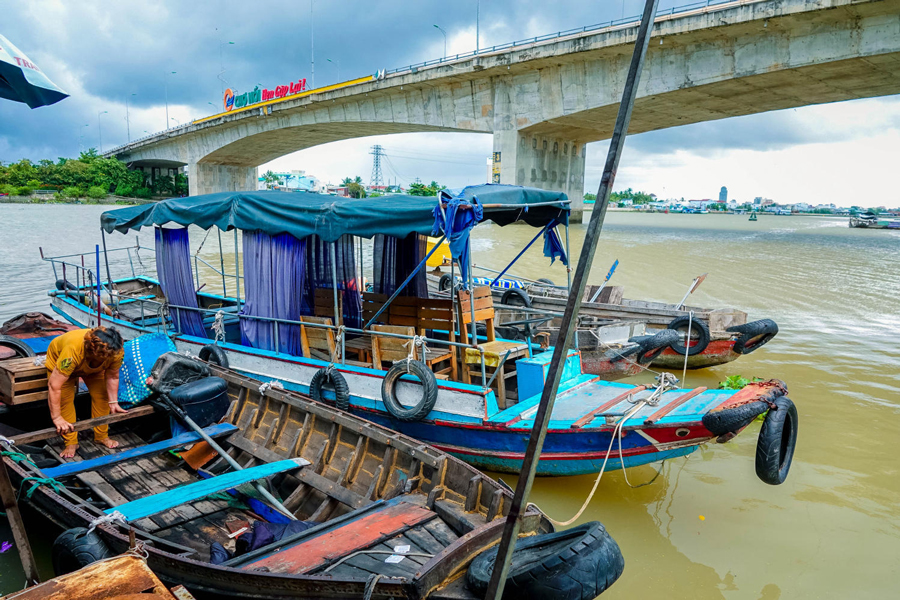
Rent a boat from Ninh Kieu Pier to visit Cai Rang Floating Market
The Cai Rang floating market is situated in the southern part of Vietnam, experiencing two distinct seasons: the rainy season, spanning from May to November, and the sunny season, lasting from December to April of the subsequent year. If you're interested in exploring the area during the flood season, which is the rainy season, it is the opportune time to do so. On the other hand, if you're a fan of fruits, the dry season is recommended for your visit.
For those planning a visit to this floating market, the optimal time to arrive is between 4 and 5 am. While the market used to operate from 2 to 3 am in the past, the main shopping activities now occur between 5 and 9 am to cater to tourists. During this period, you can witness the lively atmosphere of the floating market as boats hustle and bustle. Amidst the energetic movement of boats, you'll also have the chance to appreciate the distinctive beauty of the sunrise over the Hau River. Around 6 am, you can indulge in a boat breakfast featuring a variety of delectable hot dishes.
Travel to Can Tho: If you're not already in Can Tho, you'll need to travel to this city. You can do this by taking a flight to Can Tho International Airport or using land transportation like buses, taxis, or private cars.
Navigate to Ninh Kieu Wharf: From Can Tho city center, head to Ninh Kieu Wharf. This is a common starting point for boat trips to the Cai Rang Floating Market.
Boat Rental: Rent a boat from Ninh Kieu Wharf. The type and size of the boat depend on the number of people in your group. Smaller groups may opt for a small boat for a more intimate experience, while larger groups can consider bigger vessels.
Boat Trip to Cai Rang Floating Market: Embark on a boat trip from Ninh Kieu Wharf to Cai Rang Floating Market. The journey along the river offers scenic views of the Mekong Delta.